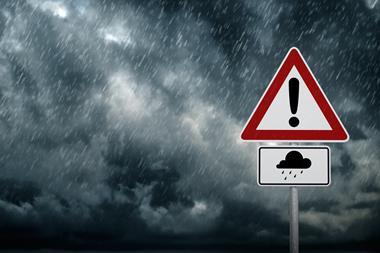MAL insists it’s under control, but Greenpeace says a polluting discharge from the plant responsible for the toxic sludge spill last year presents unacceptable risks
Despite environmental devastation and loss of seven lives caused by last October’s toxic sludge spill from MAL Hungarian Aluminium Production and Trade Company’s plant near Ajka, the company was still releasing poisonous substances in waste water directly into the surrounding area in February, according to Greenpeace.
While the Hungarian government balances the need for strong punitive action against political and cost considerations, MAL and similar plants, both in Hungary and central and eastern Europe generally, remain a “toxic time bomb”, says Hungarian Greenpeace campaigner Balázs Tömöri.
Greenpeace has been monitoring the region affected by the original spill since it first occurred. In November 2010, it identified an additional polluting discharge from the plant, via a waste water disposal pipe, and this is yet to be stopped.
Not surprisingly, MAL and the non-governmental environmental organisation have been in some disagreement as to the nature of the discharge. MAL’s catastrophe management team blamed it on rainwater and leakage rather than deliberate pollution, telling Greenpeace that it was relatively harmless and being treated. The company also considered that measurement of the risk should be interpreted in comparison with sewage water (which is discharged as a matter of course from the plant and allows for a higher threshold value of pollutants) rather than ground water.
Taking the easy option
Greenpeace, however, contends that this discharge is unacceptably toxic and going into a stream that does not stop at perimeters of the land owned by MAL.
Tömöri told StrategicRISK: “In all fairness, MAL’s emergency management team have made huge efforts to minimise losses and restore the area in the last three months since the initial spill, but the question mark around continuing pollution could really obscure this hard work. We think MAL should close the pipe that is discharging to avoid certain damage to people and nature.”
A key danger is that the water course the pipe is discharging into runs alongside a public road with busy bus lanes. The contaminants in the discharge are understood to cause nervous system problems.
While MAL’s team is endeavouring to neutralise the alkaline discharge by adding acid, Tömöri is concerned as to the adequacy of this method. “It’s essential that the acid added is mixed in properly. But this is a very small pipe. The acid is being added into the middle of the waste water channel and there are people checking the pH level of this waste water every hour – but it’s hardly the most modern technology,” he said.
“A good clean-up process would guarantee international acceptance but we fear that they are taking the easiest option.”
Perhaps the biggest concern is that the plant may simply run out of storage space for this toxic sludge, raising questions as to where it will look for additional storage.
Government worries
The Hungarian government has expressed regret over the loss of life and environmental damage caused by the initial spill – but it will also be aware of the political and financial consequences of any action it takes. MAL can expect some heavy fines but it is in the interests of the government to keep the company viable. If it goes bankrupt, it is the government that will be left to meet the very heavy costs of clean-up. It would also lead to considerable job loss in the area.
Tömöri warns: “There are other toxic hot spots in Hungary”, citing another plant, now decommissioned, which has discharged toxic waste into a storage reservoir next to Danube, the dyke of which is also the dyke of the Danube’s flood protection system. “This should be checked properly – perhaps even internationally – because it is next to an international river. A similar catastrophe here would be an even bigger disaster.”
Tömöri believes that the whole of the central and eastern European region has some very dangerous sites and that a disaster like Hungary’s toxic red sludge spill could easily happen elsewhere. “Governments need to start procedures to check these facilities properly.” SR



















